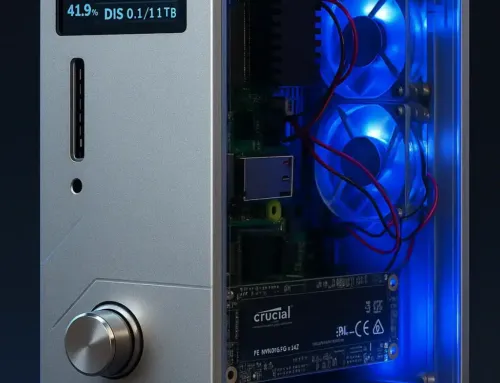
Approx. read time: 4.6 min.
Post: Chinese Cloaking Technology: Revolutionizing Stealth and Surveillance
Chinese Cloaking Technology: Revolutionizing Stealth and Surveillance
- Chinese Cloaking Technology: Introduction
- Development and Mechanisms
- Implications and Applications
- Challenges and Future Directions
- Conclusion
Chinese Cloaking Technology: Revolutionizing Stealth and Surveillance
Chinese scientists have recently developed cutting-edge cloaking technology that promises to transform military stealth and surveillance operations. This new technology, which can make objects nearly invisible to detection systems such as radar, is poised to enhance the stealth capabilities of military equipment, offering significant strategic advantages.
Development and Mechanisms
Flexible, Circuit-Embedded Fabric
A notable breakthrough in cloaking technology comes from the Air Force Engineering University in Xian. Researchers there have developed a flexible fabric embedded with circuits capable of rendering ground military equipment invisible to radar. This fabric can cover tanks, artillery, and other equipment, making them appear as flat ground on radar images. The fabric works by manipulating electromagnetic waves, using layers of thin plastic and metal to create a “meta surface” that mimics the radar signature of natural terrain [❞].
Light Manipulation and Ghost Images
In addition to radar invisibility, Chinese scientists have demonstrated a more visually dramatic form of cloaking that involves bending and manipulating light. Chu Junhao showcased this technology during a virtual event where a life-size sheet was used to make parts of a person’s body disappear. This method relies on materials that can redirect light waves, creating the illusion of invisibility. By tilting the material, the viewer’s perspective is manipulated, making objects behind it vanish from sight [❞].
Another innovative approach involves the use of metamaterials and split-ring resonators, which scatter incoming light to create ghost images. Developed by researchers at Southeast University in Nanjing, this technique does not make an object completely invisible but distorts its appearance to confuse detection systems. This technology can make soldiers look like trees or aircraft resemble birds, significantly enhancing their camouflage capabilities [❞].
Implications and Applications
Military and Surveillance Advantages
The development of these cloaking technologies offers significant advantages for military applications. By making military assets such as tanks, artillery, and radar stations invisible to radar and other detection methods, these technologies can protect them from surveillance and targeting. This is particularly important in modern warfare, where detection and precision targeting are critical. The ability to hide military assets from enemy radar can enhance the survivability of these assets and improve the effectiveness of military operations [❞] [❞].
Broader Impact on Detection Technologies
The implications of these advancements extend beyond military applications. They pose a challenge to current detection technologies, necessitating the development of more sophisticated methods to detect cloaked objects. This ongoing technological race between cloaking and detection technologies will likely drive further innovations in both fields, impacting various sectors including security, surveillance, and even civilian applications such as privacy protection [❞] [❞].
Commercial and Civilian Uses
While the primary focus of these technologies is on military applications, there is potential for civilian uses as well. For instance, cloaking technology could be used to protect sensitive installations from surveillance or to enhance privacy in public spaces. Additionally, the principles behind these technologies could be adapted for commercial applications such as reducing the visibility of structures or vehicles for aesthetic purposes [❞] [❞].
Challenges and Future Directions
Technological and Practical Limitations
Despite the promising developments, there are several challenges and limitations to these cloaking technologies. The effectiveness of the cloaking fabric and metamaterials depends on precise conditions, and their performance can vary based on environmental factors and the specific characteristics of the objects being cloaked. Moreover, the current technologies are not foolproof and require integration with other methods such as heat reduction and optical camouflage to achieve optimal results [ ❞] [❞].
Ethical and Strategic Considerations
The deployment of cloaking technology also raises ethical and strategic considerations. The ability to render military assets invisible can shift the balance of power in conflict situations, potentially leading to new forms of warfare. Additionally, there are concerns about the proliferation of such technologies and their potential use by non-state actors or for malicious purposes. Addressing these issues will require international cooperation and the establishment of guidelines to ensure the responsible use of cloaking technologies [❞].
Conclusion
The advancements in Chinese cloaking technology represent a significant leap forward in military and surveillance capabilities. By leveraging flexible, circuit-embedded fabrics and innovative light manipulation techniques, Chinese scientists have developed methods to render objects nearly invisible to radar and visual detection systems. These technologies offer substantial advantages for military applications, enhancing the stealth and survivability of military assets. However, they also pose challenges and ethical considerations that must be addressed as the technology continues to evolve. The future of cloaking technology holds exciting possibilities, with potential applications extending beyond the military to various commercial and civilian uses.
For further details, you can explore the original sources:
Related Videos:
Related Posts:
Shielding the Skies: The Israeli Iron Domes’ Defense Mastery
LiDAR vs Radar: Comprehensive Analysis and Safety Insights
Spy Camera stealth gear equipment and gadgets
GoogleBot Runs Latest Chrome – This Is Big News
If TikTok is a Threat to My Security, Why Aren’t Google and Meta?









